An “enabler” is someone who enables another to achieve an end. The term is quite often used in the context of enabling another to persist in self-destructive behavior by providing excuses or by making it possible to avoid the consequences of such behavior.
I think we would all agree that Adolph Hitler was the greatest mass murderer in the history of mankind (Stalin wasn’t too far behind him). Concentration camp deaths are estimated to be eleven million of which, six million were Jews. He was the leader who fomented the hatred and then handed off the problem solving to the first layer of senior Nazi leaders.
In the context of the Nazis’ systematic killing machine, there are two broad groups of enablers: those who “did it” and those who “made it possible.” According to Bartrop and Grimm in their book, Perpetrating the Holocaust, there are the leaders (e.g., Heinrich Himmler, Alfred Rosenberg, Hans Frank, Hermann Göring, Josef Goebbels, and Albert Speer to name a few) and then there are the enablers.
The vast scope of murders would never have been achieved without the enthusiastic support of hundreds of thousands of men and women over a period of twelve years. They participated in developing the framework, devising the details, and then implementing the process. Some would carry out the administration of the plan while another set of individuals would be responsible for executing the plan on a day-to-day basis. Other enablers included collaborators (e.g., not only individuals but collaborationist governments of occupied countries such as France and Norway) and the German industrialists.
I believe there were basically four layers of enablers. The first layer was the senior Nazi leaders reporting directly to Hitler. Along with Hitler, many of these men committed suicide before justice caught up to them (e.g. Himmler and Goebbels). Others were put on trial (e.g., Ernst Kaltenbrunner, Speer, and Rosenberg) and unfortunately, too many were never brought to justice. The first layer delegated the formation of details and final implementation to a second layer of enablers (e.g., Adolf Eichmann and Reinhard Heydrich). Then there was the third layer. These were the men and women who were responsible for the administration and ultimately, ensuring the end result met senior Nazi leaders’ expectations. They were the camp commandants, the guards, SS mobile execution units known as the Einsatzgruppen, and various Nazi bureaucratic administration officials in Berlin. Key collaborationists fell into the third layer and included men like Pierre Laval and Marshal Pétain of the French Vichy government as well as Ante Pavelić (1889-1959), leader of the fascist paramilitary Ustaše in Croatia.
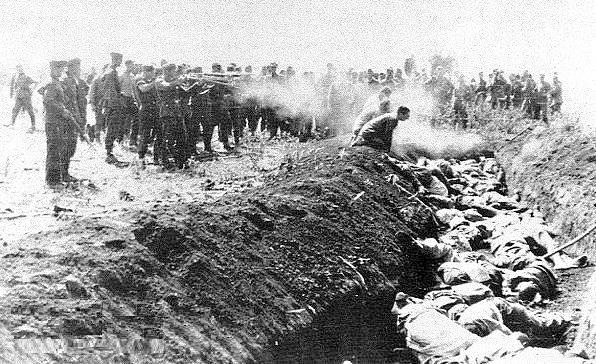
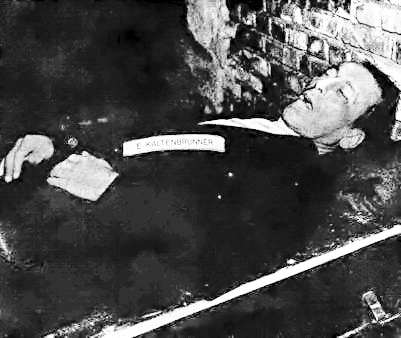
The fourth layer or, “those who made it possible” included the owners, executives, and managers of companies such as I.G. Farben which produced Zyklon B, the gas used in the extermination camps. They were no less guilty than the sadistic camp commander or brutal guard. The industrialists funded the Nazi party when it was broke and gave it the financial legs to take power. These are the people who fueled the Nazi war machine in part by appropriating Jewish businesses as well as using forced slave labor.
Did You Know?
Did you know that until recently, scholars believed Auschwitz inmate behavior, response to captivity, and overall survival instinct was indifferent to their gender? Judy Baumel-Schwartz, director at the Finkler Institute of Holocaust Research, Bar-Ilan University, completed a study whereby her results indicated quite the opposite. In other words, male and female inmates facing the same ultimate fate, approached their individual situations in different ways.
Approximately 1.3 million people were deported to the Auschwitz-Birkenau extermination camp. The life expectancy was six weeks to three months. Death resulted from poison gas, being worked to death, or outright execution by the SS or kapos. More than a million of the dead were Jews and more than half were women. Certain camp prisoners were selected to work in the Kanada warehouses, and they became known as “Kanada kommandos.” It was their responsibility to sort through the possessions taken from the inmates upon arriving at Auschwitz, determine which items would be sent back to Germany, and then prepare the former possessions for shipment. In the 1980s, Ms. Baumel-Schwartz was able to interview several of the survivors of the “Kanada Kommando” units.
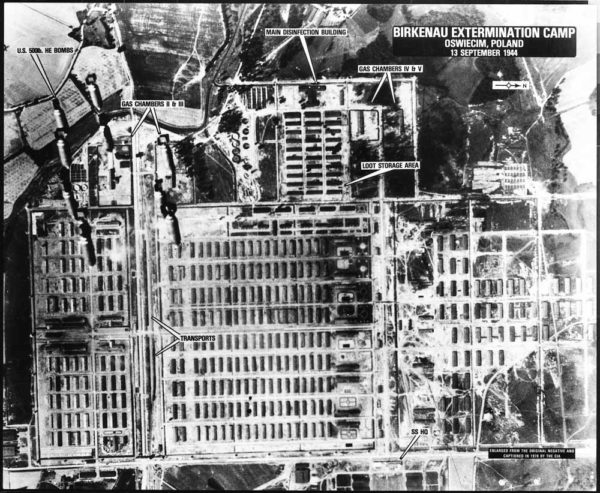
Despite the common goal of sabotage, it turned out that the behavior of these inmates towards their jobs differed by gender. One example was the fur coats. The male prisoners would rip the lining and seams to shreds ⏤ only the outer shell would remain intact. The result was that when a German woman put the fur coat on, it would completely come apart. The women prisoners did not do this. They took handwritten notes and stuffed them inside the coats. The notes read “German women, know that you are wearing a coat that belonged to a woman who has been gassed to death in Auschwitz.”
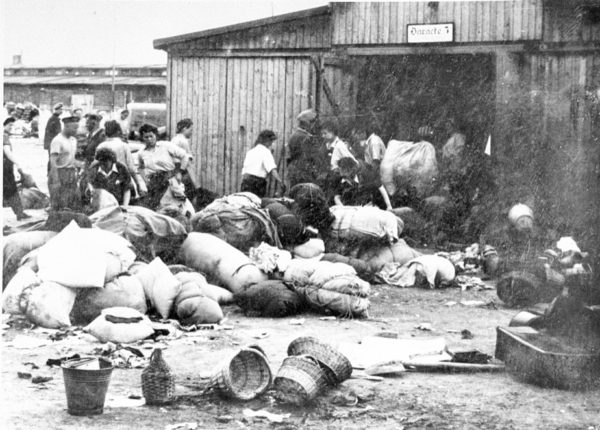
The men preferred physical sabotage whereas the women opted for psychological sabotage.
Today, we will look at the second layer of “those who did it.” I will focus solely on the enablers and in particular, the participants of a meeting known as the Wannsee Conference. This was the meeting where the “Final Solution of the Jewish Question” or, wholesale extermination of people of the Jewish faith was agreed upon.
Wannsee Conference and the “Jewish Question”
From the beginning, Hitler stated that the “ultimate goal must definitely be the removal of the Jews altogether.” This statement drove the Nazis to establish the formal Endlösung der Judenfrage or, “Final Solution of the Jewish Question.” In other words, the presence of Jews in Germany was unacceptable. The responsibility for resolving this issue fell to Himmler and his Schutzstaffel (SS) leaders including, SS-Obergruppenfürer Reinhard Heydrich.
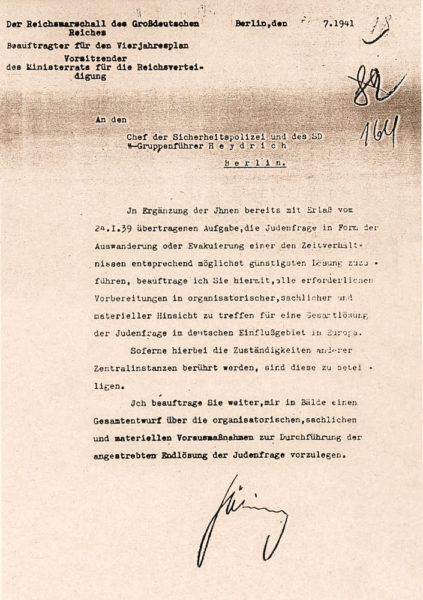
After Göring gave him authorization to submit a plan for the “total solution of the Jewish question,” Heydrich convened a meeting of fourteen other high-ranking SS officers and Nazi party officials. The 20 January 1942 meeting was held inside a villa near Berlin (the building is now a Holocaust memorial).


Here are the architects of the Final Solution:
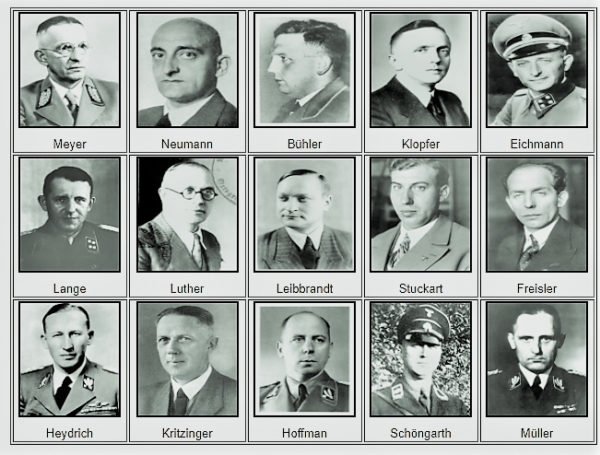
Reinhard Heydrich
SS-Obergruppenführer Reinhard Heydrich (1904-1942) was directly responsible for devising and implementing the Final Solution. Heydrich was second in command under Himmler and the head of the Reich Security Head Office (RSHA). Known as the “Blonde Beast,” he was feared within the party and one of the Nazis’ most brutal devotees. Heydrich had a neurotic temper, unmitigated cruelty, and a well-known tendency towards violence. He was “sexually unbalanced,” power hungry, and a despot. Thrown out of the German navy in the late 1920s for his disturbing behavior, Heydrich was just the sort of thug the Nazis wanted. He joined the Nazi party in 1931 and was quickly recognized for his “talents.”
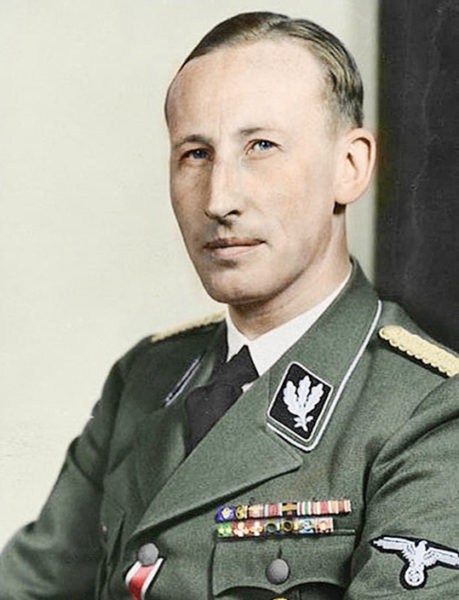
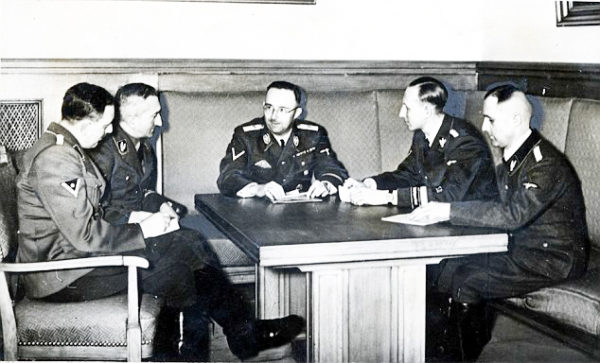
Heydrich’s goal was to eliminate eleven million European Jews. His conference at Wannsee established the framework of deporting the Jews to the East for extermination. It was agreed that ghettos would be established in Poland to initially hold Eastern European Jews before deportation to the death camps. Extermination camps were to be built initially at Belżec, Sobibór, and Treblinka. The plan also required the Jews to form Judenräte or, Jewish Councils. The councils were responsible for registering Jews, their addresses and assets.
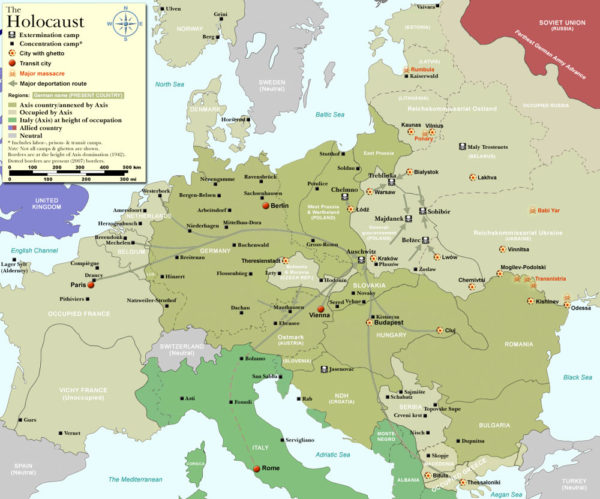
On 27 May 1942, two Special Operations Executive (SOE) trained Czech commandos blew up the car Heydrich was riding in through the streets of Prague. Severely wounded, Heydrich died several days later. Hitler retaliated by ordering the murder of thousands of Jews and 10,000 Czech citizens. More than 13,000 Czechs were arrested and 5,000 were executed. The assassins were tracked down and killed. The Polish villages of Lidice and Ležáky were bulldozed after the men were executed and the women and children from Lidice were sent to Ravensbrück concentration camp. The women of Ležáky were murdered along with the men and the children disappeared ⏤ likely gassed as none were ever heard from again.
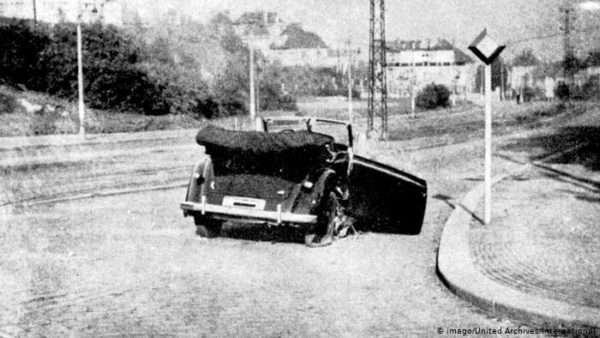
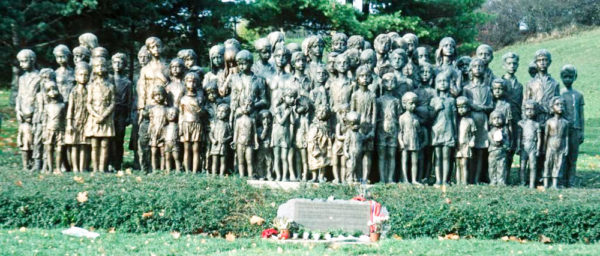
Otto Hofmann
SS-Gruppenführer Otto Hofmann (1896-1982) was the head of the SS Race and Settlement Main Office (RuSHA). Reporting directly to Himmler, Hofmann was responsible for conducting the official Race Test on the populations of each occupied territory. His office was responsible for the wholescale abduction of Polish children as well as relocating German citizens into Poland and Eastern Europe.
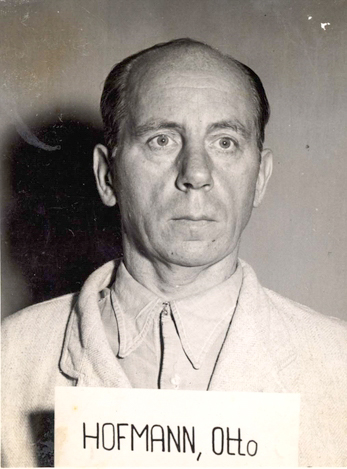
Hofmann was arrested, tried and sentenced to 25-years in prison. In April 1954, he was pardoned and released from Landsberg Prison.
Heinrich Müller
SS-Grupenführer Heinrich Müller (1900-??) was the head of the Gestapo reporting to Heydrich. He had a reputation for being ruthless and efficient. Along with his deputy, Adolf Eichmann, Müller and the Gestapo managed the process of the European deportations of Jews as well as other details of the Final Solution. He was also responsible for lines of communication between the Einsatzgruppen and Berlin.
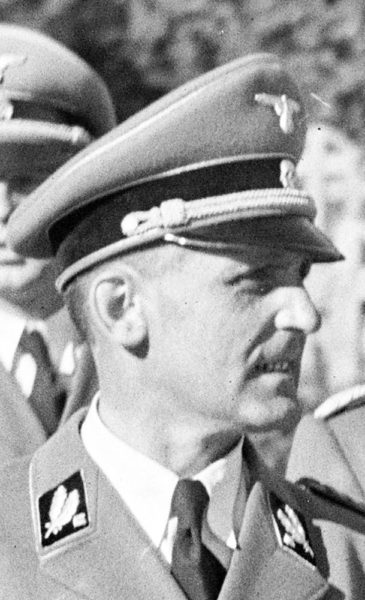
Müller was reportedly one of the last Nazis to leave the Führer bunker on 1 May 1945. However, that was the last time anyone saw him and to this day, it is not known where, when or how he died.
Karl Eberhard Schöngarth
SS-Oberführer Karl Schöngarth (1903-1946) reported directly to Heydrich. He joined the Nazi party in 1922 and by 1933, Schöngarth was working for the Gestapo. He was fiercely anti-Semitic and had roles in the SS controlled departments of the Sicherheitspolizei (Security Police – SiPo) and Sicherheitsdienst (Security Service – SD). His instructions were that any SS man who failed an order to execute Jews was to be shot immediately. Schögarth was personally invited by Heydrich to the Wannsee Conference because of his fanatical views toward Jews and suggestions on how to deal with the question.
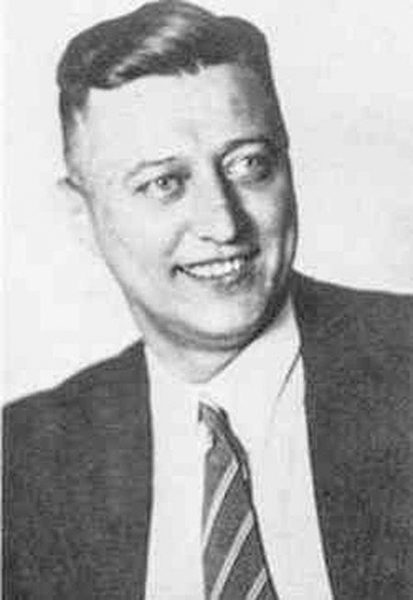
Schöngarth was captured by the British and put on trial for Crimes Against Humanity. The former lawyer was hanged on 15 May 1946.
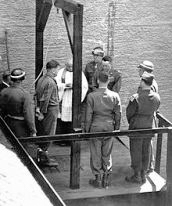
Gerhard Klopfer
SS-Oberführer Gerhard Klopfer (1905-1987) was a senior party official reporting to Martin Bormann, the Chief of the Party Chancellery, as his assistant. Klopfer was considered one of the most influential and knowledgeable Nazi bureaucrats. Bormann named Klopfer to represent him at the Wannsee Conference. Klopfer had extensive experience in managing issues relating to “race and national character” as well as the Jewish restrictions.
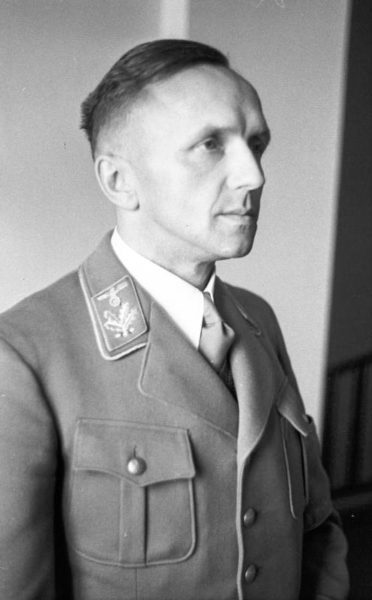
Sometime after Klopfer was arrested, he was presented with a copy of the Wannsee meeting minutes. He did not recall much of the meeting and only stated that he assumed the Jews would be “resettled.” By 1948 and after dozens of interrogations, the case against Klopfer was dropped due to insufficient evidence. After the Eichmann trial, Klopfer was once again targeted for prosecution but all proceedings were abandoned in 1962.
Adolf Eichmann
SS-Obersturmbannführer Adolf Eichmann (1906-1962) was head of a sub-department of the RSHA: Referat IV B4. Eichmann was a direct report to Heinrich Müller. Eichmann was the man who implemented the Final Solution resulting in the Shoah ⏤ the extermination of six million Jews.
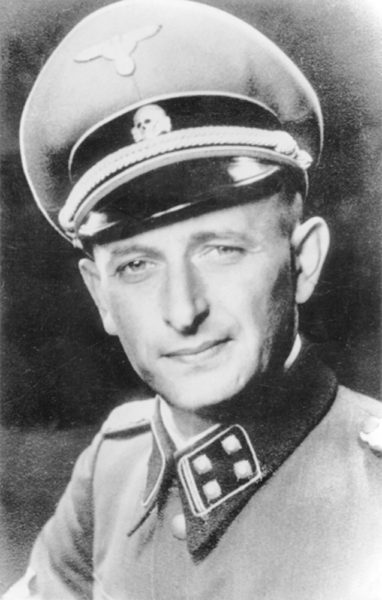
Eichmann became an expert on Jewish matters by working for Heydrich’s SD unit in 1934. A year later, he became responsible for the “Jewish Question” and specialized in collecting information on “important” Jews. Himmler appointed him to oversee Jewish emigration in Vienna where Eichmann routinely extorted the Jews. By 1939, Eichmann was appointed as the head of Department IV B4 which was responsible for “Jewish affairs and evacuation” in German occupied countries ⏤ later to become the Final Solution. Under Eichmann, Jewish ghettos were established but run by the SS and local police. After the Nazis attacked the Soviet Union in June 1941, Eichmann sent in the SS-Einsatzgruppen squads to murder East European Jews in Nazi controlled territories. However, Eichmann found this to be an inefficient method of mass killing and needed something on a larger scale.
Eichmann organized the Wannsee Conference along with Heydrich. He served as Heydrich’s secretary at the meeting and prepared the minutes. After the general framework of the Final Solution was agreed upon, Eichmann and his staff became responsible for the massive logistical operation of rounding up, transporting, murdering, and disposal of the victims in the death camps.
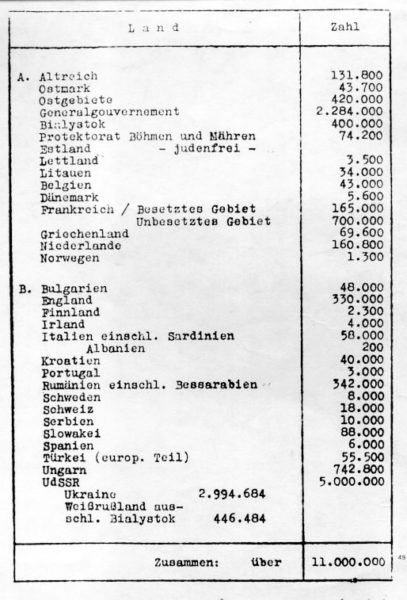
Arrested in 1945, Eichmann escaped and ultimately made his way to Argentina where he lived and worked until May 1960 when agents of the Mossad kidnaped Eichmann and brought him to Israel to stand trial. Found guilty on all fifteen counts, Adolf Eichmann was hanged on 31 May 1962. His trial brought the attention of the world back to the atrocities committed by the Nazis and the Holocaust.
Rudolf Lange
SS-Sturmbannführer Rudolf Lange (1910-1945) was the commander of the Einsatzkommando 2 (EK2), a group of five SS-Einsatzgruppen mobile execution units, which operated in Latvia. He became head of the Riga Gestapo and Criminal Police and gave orders to carry out massacres of the locals throughout the general vicinity of Riga. Over a period of seven days in late 1941, Lange planned and carried out the murder of 24,000 Latvian Jews in a forest near Riga. By this time, EK2 had murdered 60,000 Jews from Latvia. Despite Lange being the lowest ranking officer (equivalent to a major) at the Wannsee Conference, he was included because of his field experience in killing. After the meeting, Lange continued the exterminations using gas vans and in a two-day period, murdered 35,000 people.
By January 1945, Lange was fighting the advancing Soviet Army which was on its way to Berlin. No one knows whether he committed suicide on 16 February or was killed in battle on 23 February.
Alfred Meyer and Georg Leibbrandt
Reporting to Alfred Rosenberg, Georg Leibbrandt (1899-1982) and Alfred Meyer (1891-1945) represented their boss at the Wannsee Conference. Rosenberg (1893-1946) was a top party official responsible for the racial theories of the Nazis. Both Leibbrandt and Meyer worked for the Ostministerium or, the Reich Ministry for the Occupied Eastern Territories.
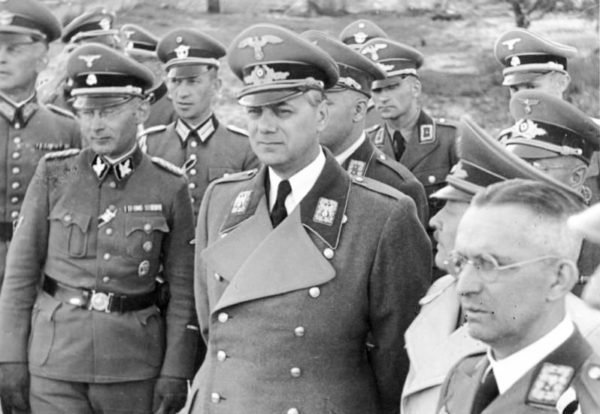
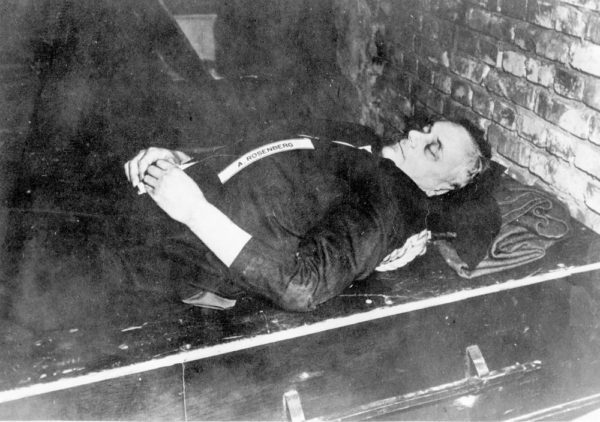
Meyer committed suicide in April 1945 while charges were never brought against Leibbrandt.
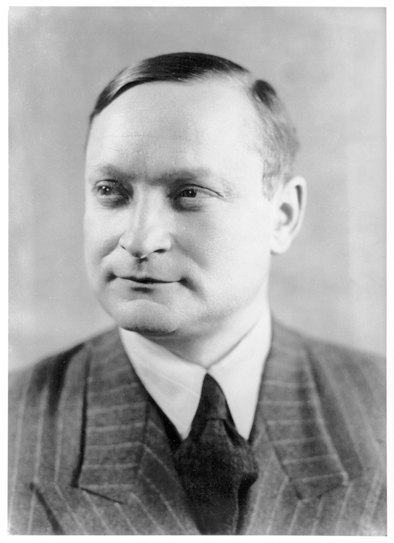
Josef Bühler
Josef Bühler (1904-1948) was a State Secretary reporting to Hans Frank, Governor-General of Occupied Poland. He represented Frank at the Wannsee Conference. It was Frank’s wish that he wanted “a speedy solution of the Jewish question.” Bühler urged the conference attendees to quickly implement the Final Solution. After the meeting, Bühler returned to Warsaw and commenced the ethnic cleansing of Poles.
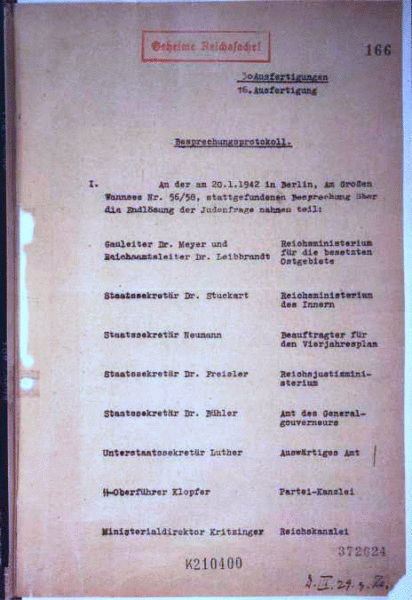
Bühler was extradited to Poland where he was tried and found guilty of Crimes Against Humanity. He was hanged on 22 August 1948 in Kraków.
Roland Freisler
Roland Freisler (1893-1945) was a State Secretary at the time he attended the Wannsee Conference. He served as a Nazi judge in the Volksgerichtshof (People’s Court) between 1942 and the time of his death (click here to read the blog Hitler’s Blood Judge). He headed the show trials and ninety percent of the cases before him resulted in a death sentence including the infamous trial of Sophie Scholl and the White Rose group.
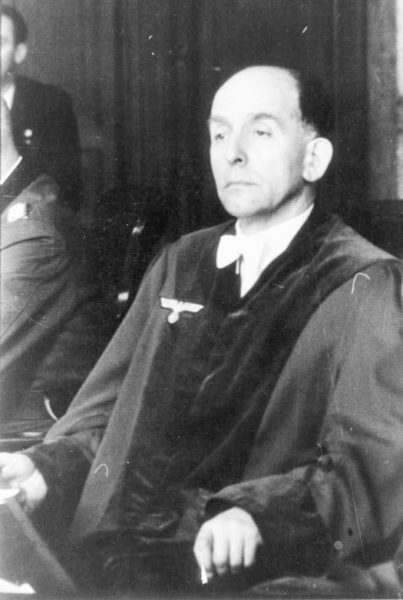
Freisler died on 3 February 1945 when concrete columns fell on him in the courtroom during an Allied bombing raid.
Wilhelm Stuckart
SS-Brigadeführer Wilhelm Stuckart (1902-1953) wrote the Nuremberg race laws in 1935. He attended the conference as the representative of the Reich Minister of the Interior, Wilhelm Frick. Stuckart was selected to assist with the procedural, jurisdictional, and legal questions regarding the mass murder plan.
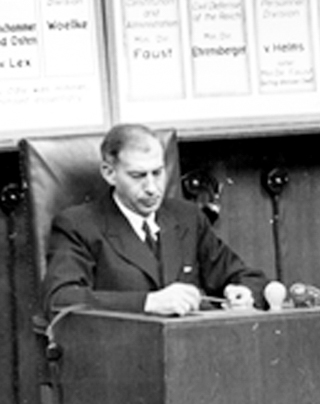
Stuckart was a defendant in the Nuremberg follow-up trial known as the “Ministries’ Trial.” Stuckart was determined to be an ardent Jew-hater and found guilty of formulating and carrying out anti-Jewish laws. He was sentenced to 3 years and 10 months however, Stuckart never served a day of the sentence. He died in a curious car crash.
Erich Neumann
SS-Oberführer Erich Neumann (1892-1948) represented Hermann Göring at the Wannsee Conference. Captured by the Allies, Neumann was released after being interrogated and died shortly thereafter due to ill health.
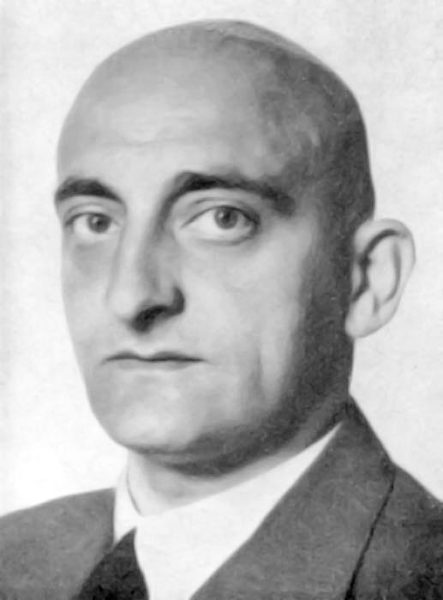
Friedrich Kritzinger
Friedrich Kritzinger (1890-1947) was the deputy head of the Reich Chancellery and reported to SS Officer Hans Lammers (1879-1962). Kritzinger represented Lammers at the conference. Right after the conference ended, Kritzinger resigned his position but the resignation was not accepted. As a witness at the Nuremberg trials, he expressed his shame of the atrocities committed by the Nazis. Kritzinger was arrested but died of ill health shortly after being released. Hans Lammers was a defendant at the Ministries’ Trial and received a twenty-year sentence. He served only two years.
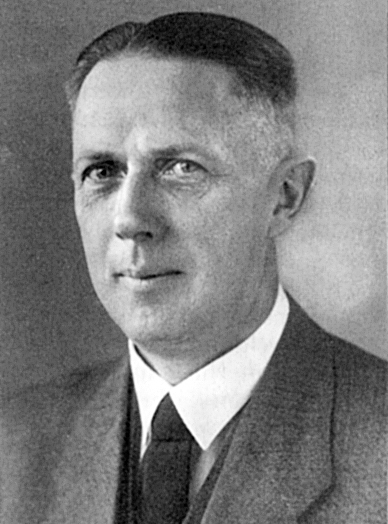
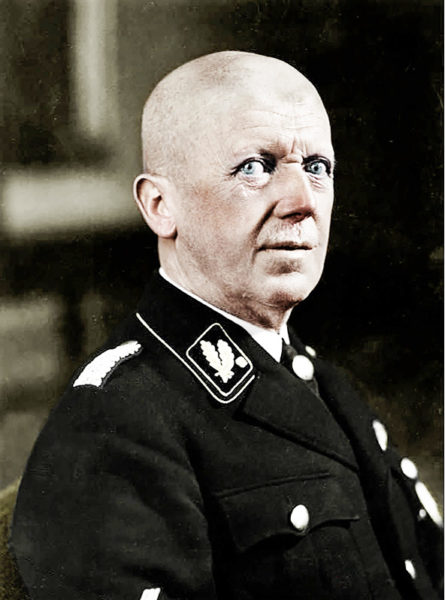
Martin Luther
Martin Luther (1895-1945) was an undersecretary in the Reich Foreign Ministry under Joachim von Ribbentrop. He attended the conference as von Ribbentrop’s representative. It was Luther’s responsibility to persuade German allies to turn over their Jewish citizens for deportation to the death camps. Luther fell out of grace with the Nazis and was sent to Sachsenhausen concentration camp in 1944. He attempted suicide numerous times but was finally freed by the Soviets. He died shortly afterward of heart problems.
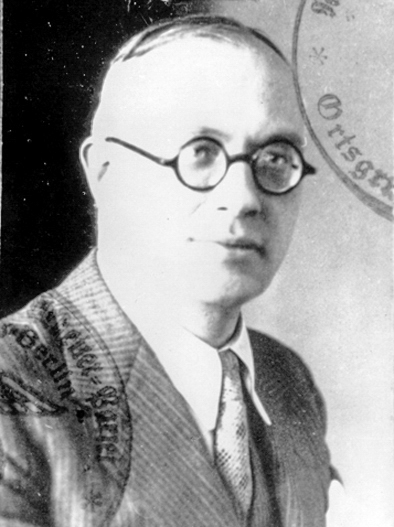
Luther’s copy of the Wannsee minutes survived the war and was discovered in 1947. Prior to its discovery, the Allies had not known about the conference.
The Nuremburg and Follow-up Trials
Most of us are familiar with the main Nuremburg Trial where twenty-four senior officials and officers of the Nazi hierarchy were tried on four counts including Crimes Against Humanity. However, after the conclusion of the main trial in October 1946, there were twelve other Nuremberg trials between December 1946 and April 1949. Other war crime trials and tribunals included the Dachau trials, Auschwitz trial, and Sobibor trial. Some of the suspected Nazi war criminals were extradited to countries where their crimes had taken place and put on trial for war crimes (e.g., Hungary, Romania, and Yugoslavia).
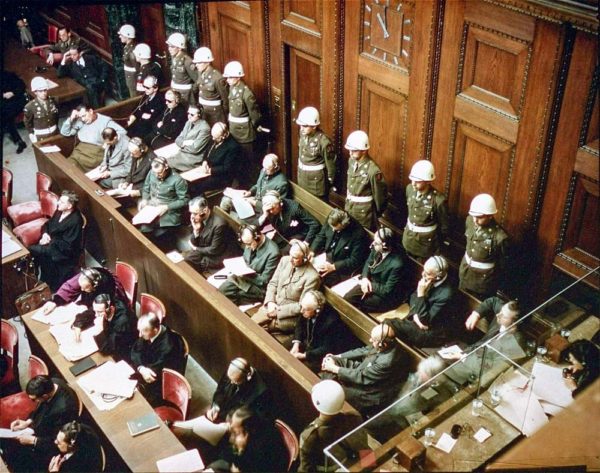
Unfortunately, thousands of Hitler’s enablers went unpunished or walked away without serving their full sentences. By mid-1957, with the exception of three incarcerated Nuremberg criminals, all convicted former Nazis had been released from jail regardless of sentence.
Hitler’s Enablers – The Blog Series
This is the first blog in a series that will take a look at Hitler’s enablers at the different levels. Today, we talked about the second level just below the “leaders.” Future blogs in this series will include the enablers in the administration of the Final Solution, the concentration camps, and the doctors.
★ Learn More About Hitler’s Enablers ★
Bartrop, Paul R. and Eve E. Grimm. Perpetrating the Holocaust: Leaders, Enablers, and Collaborators. Santa Barbara: ABC-CLIO, LLC, 2019.
Betz, Dr. Astrid, Dr. Alexander Schmidt, and Hans-Christian Täubrich (editors). Memorium Nuremburg Trials: The Exhibition. Nürnberg: Museen der Stadt Nürnberg, 2012.
Kramer, Stanley (producer and director). Judgement at Nuremberg. United Artists, 1961.
Ophuls, Marcel (director). The Sorrow and the Pity. Productions Télévision Rencontre S.A., 1969.
Stangneth, Bettina. Eichmann Before Jerusalem: The Unexamined Life of a Mass Murderer. New York: Alfred A. Knopf, 2014.
What’s New With Sandy and Stew?
I’ve recently finished reading two books which do an excellent job of painting a clear picture of the horrors of fighting during World War II. One book, Ivan’s War, is an in-depth look into the Soviet army and the hardships the common soldiers faced during the nearly four-year war against the Germans. After reading the book, I came to the conclusion that Stalin’s soldiers suffered the greatest among the major armies. It’s an interesting read as this is a part of the war which hasn’t had a lot of coverage.
The second book, Mission, is primarily about Jimmy Stewart’s career in the Eighth Army Air Force during World War II. Stewart went into the service as a private and ultimately, became a general. He was a pilot, squad commander, and group commander for the B-24 heavy bombers known as the Liberators. The author spends a great deal of time taking the reader through the missions Stewart either flew or waited on the ground to see how many of his “ships” came back in the early evenings. After reading this book, I came away convinced that the deadliest duty during the war was flying on the B-17s and the B-24s. We tend to think only in terms of the Germans taking down these aircraft. However, there were many other reasons for the casualties, and they were primarily self-inflicted.
Here are the books if you are interested.
Matzen, Robert. Mission: Jimmy Stewart and the Fight for Europe. Pittsburgh: GoodKnight Books, 2019.
Merridale, Catherine. Ivan’s War: Life and Death in the Red Army, 1939-1945. New York: Picador, 2006.
Thank you to all of you who subscribe to our bi-weekly blogs. It seems there isn’t a day that goes by where we don’t increase our readership. Please let your history buff friends and family members know about our blogs.
Someone Is Commenting On Our Blogs
I’d like to thank Katie for reaching out to us in regard to our recent blog, Dresden Brick Ladies (click here to read). Katie wanted to know why the “brick ladies” got tickets to the best seats so many years after World War II.
It was explained to me the city mayors hold/held these women in very high esteem and that providing special services to them was their way of repaying the women for the arduous work of cleaning up the destroyed cities. Nichole C. wrote to us that she believes it is likely the German government initiated this as a way to thank them and it is mandatory for the mayors to provide them with these perks.
If there is a topic you’d like to see a blog written about, please don’t hesitate to contact me. I love hearing from you so keep those comments coming.
Why Would You Want To Buy Our “Walks Through History” Books?
Simple.
You like to travel and experience history and historical events. You like to see original buildings that had a significant impact on the people and events of the history you’re engaged with. You want to know the stories behind the brick and mortar in front of you.
The walking tour books are meticulously researched so you can go directly to those sites and learn about the building’s history as well as an introduction to some of the more interesting people associated with it.
We Need Your Help
Please tell your friends about our blog site and encourage them to visit and subscribe. Sandy and I are trying to increase our audience and we need your help through your friends and social media followers.
Thank You
Sandy and I appreciate you visiting with us. We have some exciting things on the horizon and we’ll keep you updated as we go along.
Share This:
Follow Stew:
Find Stew’s books on Amazon and iBooks.
Please note that we do not and will not take compensation from individuals or companies mentioned or promoted in the blogs.
 Walks Through History
Walks Through History
Copyright ©2020 Stew Ross
